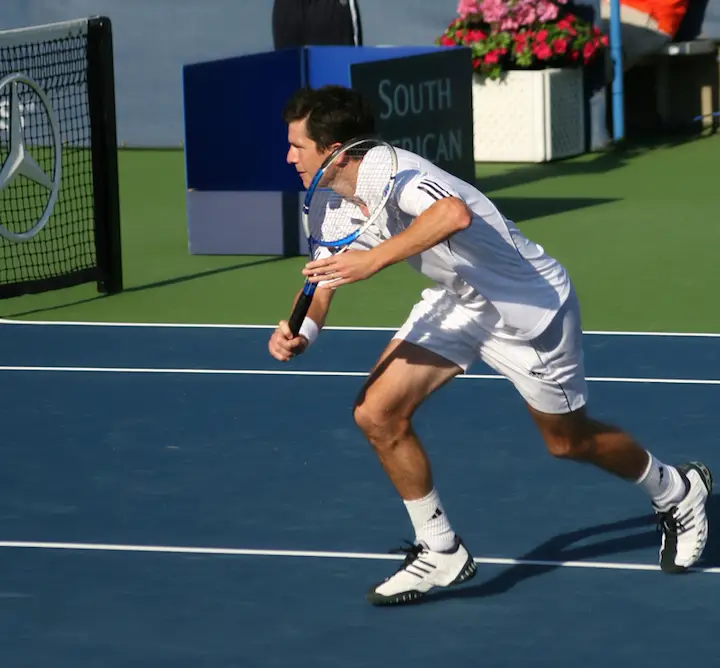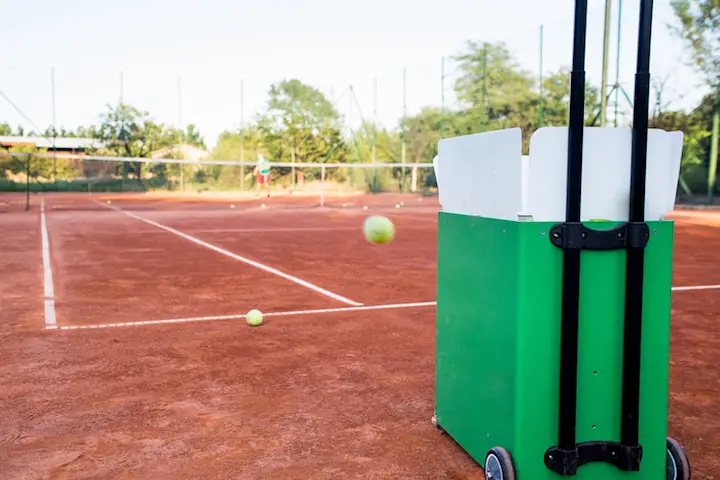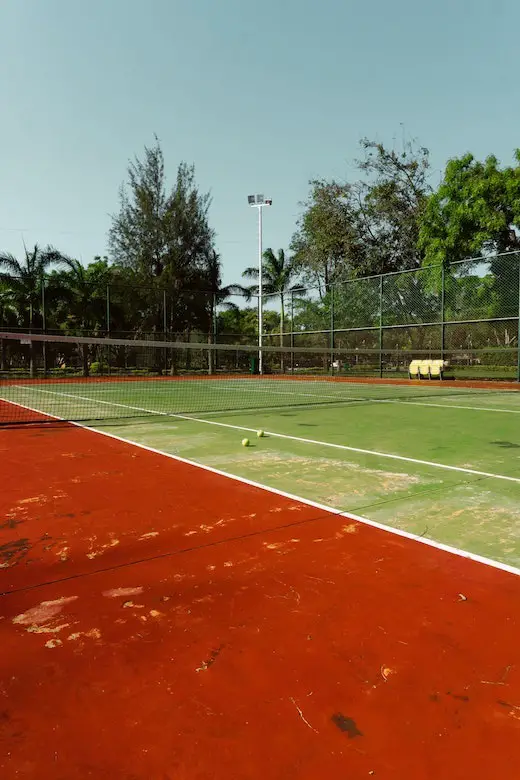Your Guide
 Gavin Davison
Gavin Davison
Tennis is full of different shots you can play, both in practice and on the match court.
But for the purposes of this piece, I shall be focusing on one of the more difficult shots – the volley.

This is one of the trickier shots to actually learn, and ultimately, TO MASTER.
It goes against many of the laws of hitting a good shot for other strokes, such as a forehand and backhand, which is why people can often struggle.
However, providing you grasp the fundamentals, your volleys will instantly improve, I can assure you.
So what is a volley?
As for what a volley is, by definition, it is a shot that is hit without the ball actually bouncing.
This also includes what is referred to as a ‘drive volley,’ which is basically a forehand or backhand hit without the ball bouncing.
As stated, it can be a tricky shot to hit correctly and effectively, but the information below should help you out!
Requirements to hit a great volley
Use of the Legs
Many players think that it’s the torso and arms that are most important when hitting a volley, but I can tell you firsthand that this isn’t strictly true.
In fact, if you try to put some pace on a volley without using your legs, you risk swinging too large and missing the shot.
This gets even trickier when you’ve got players hitting the ball quite hard in your direction, which is where the legs become even more pivotal in hitting a great volley.
Now, when I say ‘use of the legs,’ I am talking about MAINTAINING A LOW POSITION, with knees bent, and stepping through the volley to get adequate pace on the ball.
To watch this in motion, I recommend viewing the Federer video below:
He may look a little relaxed in the video since this is a practice session, but the fundamentals of staying low and stepping into the volley are firmly there.
Back when I was coaching, I liked to describe this motion as a ‘V shape’ on the ground in front of you.
For the forehand volley, you need to step forward with your left foot on the V shape, and for the backhand, you must do the same while stepping with the right leg.
Contact on the Ball
Another incredibly important element of hitting a great volley is your actual contact on the ball, which is true of most shots in tennis.
Basically, you want to ensure that you contact the ball right out in front of you for that nice, solid punch that is required for all volleys.
By getting the ball right out in front of you, you will also help to keep the wrist firm, but it goes a little deeper than just these fundamentals if you want to hit a truly great volley.
This is where things may seem a little technical, so read carefully!
As you go to contact the ball, ideally, you want to carve around the top edge of the ball so that when it touches the court on the other side, it stays low and skids through.
This avoids the ball sitting up high, and it also makes it tougher for your opponent to then hit the ball past you at the net.
Many players think that you just punch the volley flat, but if you watch all the great volleyers, they somewhat ‘carve’ the ball to CREATE THIS EFFECT.
Correct Grip
I’ve got to confess; this is a little pet peeve of mine!
The correct grip to hit a great volley is actually a continental grip, sometimes called a ‘chopper grip’ depending on where you are.
It is not a forehand grip, as this makes it much tougher to control the ball on contact, despite the fact that the racket face is then more OPEN TO THE BALL.
That’s where the confusion comes in.
Sure, having an open racket face towards the ball creates a larger surface area, meaning there is a better chance of contacting the ball in the middle of the racket, but then it is impossible to get that CARVE ON THE BALL that I’ve mentioned above.
The knock-on effect is that when your volley hits the other side of the court, it will sit there, ready for your opponent to hit a nice passing shot out of your reach.
Of course, that’s not what you want to happen, so even if hitting a volley with a continental grip seems difficult at first, I promise you that you’ll benefit in the long run.
Short ‘Swing’
Again, this is a potential pitfall of hitting the volley in the way that it should be hit.
Naturally, when you are up at the net, you’ll want to hit a volley that actually puts the opponent under pressure, and this can be done through either positioning or pace.
Ideally, a blend of the two is WHAT YOU WANT, but players can often mistake the correct form required here.
Rather than taking a huge swing at the volley, you’ll want to bend your arm at the elbow, keep your arm tight to the body, and go out to ‘punch’ the ball.
It’s a very compact motion that is required here, rather than a larger motion required on groundstrokes.
Is leg movement important?
In effect, it’s very much a punching motion as opposed to a swing, which is why you need to emphasize the leg movement to get the power required.
As a little bonus, if you want to marvel at the exact technique for either a forehand or backhand volley, I recommend watching Pat Rafter, Tim Henman, or Pete Sampras.
All have sadly retired, but they were the best of the best – in my opinion.
Purpose of a volley
I’ve talked a lot about technique and how to execute the volley effectively, but it’s also important to understand the purpose of the stroke too.
You already know that most volleys are hit somewhere between the net and the service line, but there are two key selections you must make for YOUR VOLLEYS.
I like to call these the ‘builder volley’ and the ‘put away volley’.
Now, a builder volley is where you are simply looking to put your opponent under pressure and establish a better position for a put-away volley – you’re not really looking to hit a winner on this volley.
These are usually hit further back in the service box or even just before the service box when serve and volleying.
In contrast, the put-away volley is very much designed to win the point, whether by hitting a clean winner or by forcing the error.
This happens closer to the net compared to the builder volley, and yes, overheads are included in this category!
So there you have it, an explanation of the volley, how to hit one well, and what its purpose is.
Did you enjoy the article? Have anything you’d like to add? Let us know down below.



